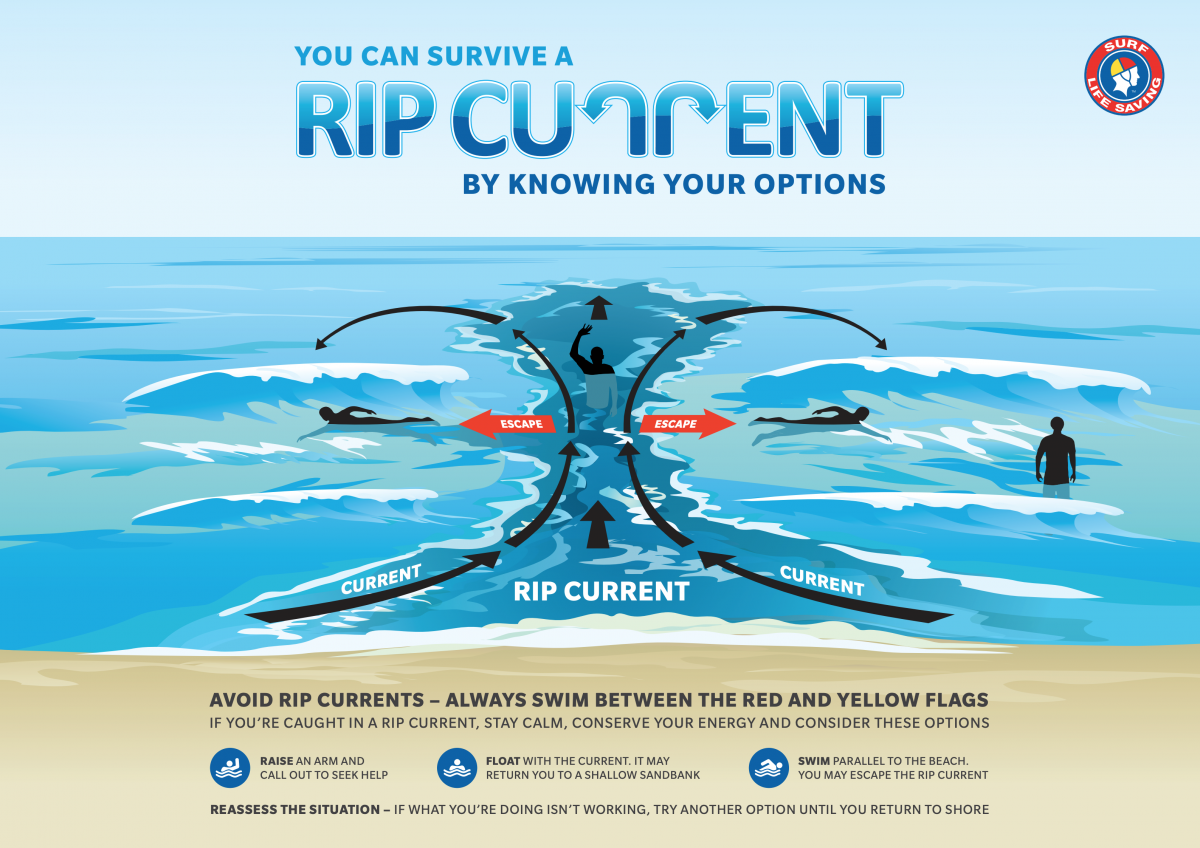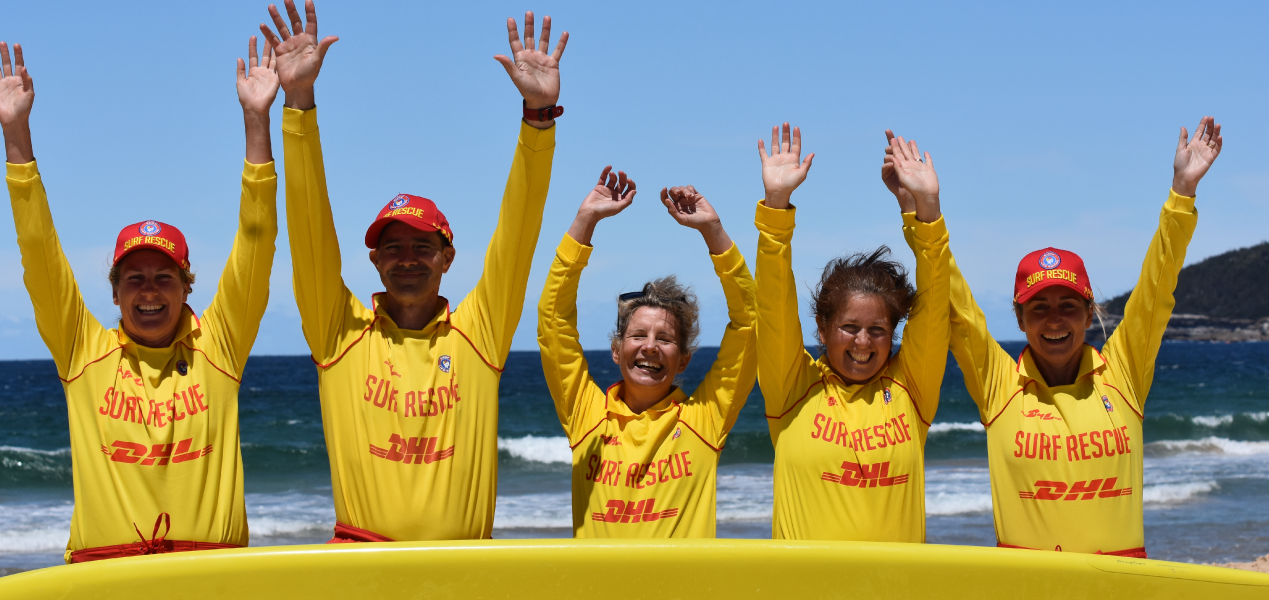Queenscliff Surf Life Saving Club is nearing its 100th anniversary in 2024. While life has changed dramatically in the last century, one thing remains the same: Queenscliff SLSC is focused on protecting life and saving lives on Queenscliff beach.
Patrols are the foundation of surf lifesaving. Our volunteer lifesavers patrol Queenscliff Beach from the pool to the pipe north of North Steyne on weekends and public holidays from the end of September and finish on ANZAC Day every year. We have 12 patrols at Queenscliff led by very capable Patrol Captains, Vice Captains, Bronze and Surf Rescue Certificate members. Collectively our Lifesavers give approximately 10,000 hours of their time striving to ensure there are no lives lost on Queenscliff Beach during patrols.
Our Club Captain is the operational leader of the Club responsible for the general conduct of members and can require any member to perform any reasonable duty. The Club Captain arranges patrols, selects patrol members and captains and ensures all members for patrol are proficient. If you would like to contact our Club Captain or Vice Club Captain, contact details are below.
Club Captain
Rich Mills – clubcaptainrich@queenscliffslsc.org.au
Vice Club Captain
Steve Evans – viceclubcaptain@queenscliffslsc.org.au
What’s involved?
There are two patrols each day running from 8:45 am to 1:30 pm and 1:15 pm to 6:00 pm during daylight saving and 8:45 am to 1:00 pm and 12:45 pm to 5:00 pm during the rest of the season. Each patrol has around 10 shifts a season.
Patrolling members are required to undergo skills maintenance (proficiency) for their relevant awards each year in order to remain as an active patrolling member covered by insurance during any one season.
You can be a part of that by joining the Club and doing your Surf Rescue Certificate (13-14 Years of age) or Bronze Medallion (15 years and above)
Speak to one of the Surf Life Savers on the beach or our Club Captain who will get you started.
Rich Mills – clubcaptainrich@queenscliffslsc.org.au
Nipper parents are particularly encouraged to do their Bronze Medallion.
More Information
Skills Maintenance
Get a head start on your Skills Maintenance (proficiency)
SLSA members can use the TappnEd interactive video platform for content and skills refresher training prior to annual skills maintenance programs, and can do so on nearly any device, any time and from any location with internet access as part of SLA’s emphasis on innovation in learning and education.
TappnEd’s unique video technology allows SLSA members to view, engage and test themselves with fully interactive SLSA training videos on smartphones, tablets and desktops.
Bronze Medallion training videos are used, and refresher questions are all contained within the video frame as an overlay on the paused video content. No third-party app downloads are necessary and the videos range from one to four minutes.
How can you access it?
The interactive videos are free to use and there is no log-in required. Simply click on links to the websites listed below:
01 – Resuscitation – 2 Person
02 – Resuscitation – 1 Person
04 – Board Rescue – Conscious Patient
05 – Board Rescue – Unconscious Patient
06 – Tube Rescue – Conscious Patient
07 – Tube Rescue – Unconscious Patient
08 – Spinal Board Carry – Patient in Water
09 – Spinal Board Carry – Patient in Standing Position
10 – IRB Lift and Carry
12 – Resuscitation – 4 Person including Oxy Viva and Defib
13 – IRB Awareness – Launch, Landing, Lift and Carry
What is it for?
These interactive videos are just for you to practice prior to your skills maintenance, or at any time, as much as you like. It is not compulsory; results are not documented anywhere; and it is not trackable to specific members.
Why should you use it?
To review key lifesaving skills prior to attending your skills maintenance activities for the upcoming season.
Good luck!!
Before Patrol
Patrol members need to:
- Arrive on time
- Be dressed appropriately wearing the current SLSA patrol uniform of quartered cap, shorts, shirt and a Surf Rescue peak cap or broad brimmed hat). Bring your own whistle
- Sign on in the Patrol Requirements section of the Patrol Log in the Patrol Room
- Report to the Patrol Captain.
Patrol Requirements
Each Patrol must have at least:
- 1 Silver Medallion Beach Management holder
- 1 IRB Driver and 1 IRB Crewman
- 1 ARTC holder
- 5 Bronze Medallion holders
Please ensure that the Patrol Log indicates who is the designated personnel for each award/duty.
On Patrol
- Each patrol must have a spinal kit on the beach (spinal board, spinal collars and straps)
- Patrol caps are to be worn on the head or in your pocket at all times
- If you wish to train during a rostered patrol, this can only be sanctioned by your Patrol Captain, and this will only occur if there is adequate coverage of the beach by other patrol members
- Do not hang towels to dry on the Patrol Shelter walls.
After Patrol
- Start packing up patrol no more than 15 min before time
- If there are large numbers of people still on the beach and in the water, Surf Life Saving NSW has asked if patrols can spend extra time watching the beach after patrol hours have finished
- Start pulling down the tent and put non-vital equipment away leaving a board, tube and first aid kit out until patrol finish
- Wash the equipment before packing it away
- Wash out the IRB engine and IRB hull and run the engine for 3-5 minutes in fresh water. (Don’t worry about water restrictions as the club has an exemption through Sydney Water)
- Turn off radios, check for any water damage and place all the radios on the correct charger
- Ensure all equipment is neatly stored in the equipment shed and Patrol Room
- Check for damaged equipment and resources and notify the relevant club officer of any equipment and resources requiring repair or replacement
- Complete the IRB log
- Return empty oxygen bottles to the Training Room
- Ensure that the Patrol Room, IRB shed and clubrooms are locked and secure to prevent break-ins.
Patrol Log
- Sign in on the Patrol Log at the beginning of the patrol (to the nearest quarter of an hour)
- At the end of the patrol sign off by writing the end time in the appropriate column and calculate your patrol hours.
- Place the Patrol Log in the Mail Box on the first floor of the ClubThe Captain should complete all relevant statistics. This is imperative and these figures should be provided to Surf Com via radio
If an incident occurs on patrol please record all details in the Incident Report Log Book
- Time, date and place
- Personal details, contact name and address and phone
- Narrative
- Include Incident Report with Patrol Log
Inability to attend Patrol
All patrolling members are expected to attend their rostered patrols.
If for any reason you are unable to attend a patrol, it is your responsibility to arrange a replacement with the same qualifications. Please advise your Patrol Captain of your absence and the name of the substitute. The replacement should sign on the Patrol Log in your name, with their name as the substitute and Patrol Type = Substitute.
If you are unable to arrange a replacement, then please ensure your Patrol Captain is advised, so that he/she can assist you in arranging a substitution. Failure to find a substitute for your Patrol without communication to either the Patrol Captain or the Club Captain will result in two additional Patrols. A “Make Up” Patrol for the Patrol you missed plus a “Penalty Patrol” for non-attendance of the Patrol.
You will need to do a Make up Patrol, in lieu of the Patrol you missed, as soon as possible after but before your next rostered patrol, preferably by returning the favour to the member who subbed for you. Please notify the PC of the patrol you will be attending of your planned attendance in advance.
Competitor Patrol Requirements
Competitors have a requirement to do a minimum of twenty-five hours for Active members, twelve hours for Active Reserve members, in the preceding calendar year in order to be able to compete in championship carnivals.
Competitors also must not be more than two rostered patrols in arrears at any time in order to compete at any event.
Visit the Surf Life Saving Australia website for competitor Patrol requirements.
Leave of Absence
If you are going to be away for an extended period, please notify the Club in writing by way of the Club Secretary at admin@queenscliffslsc.org.au. This correspondence will be tabled at the next Committee meeting where grounds for “Patrol Exemption/s” or “Leave of Absence” may be granted.
How to spot a rip current?
Rips are complex, can quickly change shape and location, and at times, are difficult to see. The things to look for are;
- Deeper, dark-coloured water.
- Fewer breaking waves.
- A rippled surface surrounded by smooth waters.
- Anything floating out to sea or foamy, discoloured, sandy, water flowing out beyond the waves.
Rips don’t always show all of these signs at once.
How to survive a rip current?
- Relax – stay calm and float to conserve your energy.
- Raise – raise your arm and attract attention from lifeguards or lifesavers.
- Rescue – the lifeguards or lifesavers will be on their way to help you.
- While floating, rip currents may flow in a circular pattern and return you to an adjacent sandbar
- You may escape the rip current by swimming parallel to the beach, towards the breaking waves.
- Reassess your situation. If what you’re doing isn’t working, try one of the other options until you’re rescued or return to shore.


